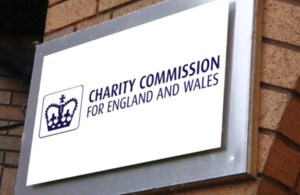What makes a charity?
Kenneth Dibble, Head of Legal Services and Chief Legal Adviser for the Charity Commission, dispels myths about what makes a charity.

First published by Solicitors Journal on 7 May 2013, and reproduced by kind permission
Many people have misconceptions as to what makes a charity and who decides. Many assume that the Commission as registrar and regulator of charities ‘bestows’ charity status on organisations according to whether we deem them worthy, and that the quality of an organisation’s management and its effectiveness contributes to that judgement. In other words, many people think of charity registration as a type of licensing system, and that the Commission can withdraw charity status from charities that do not perform well.
While such a system could arguably have its merits, it is not what the legal framework in England and Wales provides for. What is and what is not a charity is a matter of law, not judgment and whether an organisation is on our register or not does not determine charity status. Indeed, many thousands of charities are unregistered, because their annual incomes fall below the threshold that makes registration for charities compulsory (£5,000).
The law says that charities are organisations that
- have exclusively charitable purposes, and
- operate for the public benefit
Charitable purposes
The Charities Act 2011 sets out 13 descriptions of charitable purposes, which include the prevention and relief of poverty, the advancement of education, the advancement of religion, the advancement of health or saving of lives and general charitable purposes.
Public benefit
There are two aspects to public benefit; namely the ‘benefit’ aspect and the ‘public’ aspect.
Benefit aspect
The benefit aspect means that organisations applying to register as charities must be able to demonstrate that there work does indeed provide an identifiable benefit. That benefit must be linked to the organisation’s purpose, be balanced against any detriment or harm, and must not be political, as charities may not have political purposes (this does not prevent charities from taking part in political activities, such as campaigning, as a way of pursing a charitable purpose).
Public aspect
Organisations must also be able to show that the public, or sections of the public, will be the recipients of the benefit – the beneficiaries. The trustees must be able to demonstrate that who can benefit is not unreasonably restricted. For example, people in poverty cannot be excluded from the benefit.
Most registration cases are straight-forward and clear cut. It is relatively rare for questions to arise as to an organisation’s charitable status under law, although such cases do occur. For example, last year, we won a challenge in the Charity Tribunal, brought against us by an organisation known as Full Fact, which had applied to register but which we had turned down. The Tribunal agreed with our decision that the charity’s objects of ‘promoting civic responsibility and engagement’ was not exclusively charitable.
It is important to stress that while the quality of a charity’s management is not relevant to its legal status, trustees do have legal duties and responsibilities towards their charities. We as regulator have a role in ensuring they comply with those duties and can investigate trustees for non-compliance. In serious cases we can suspend or remove trustees, or appoint an interim manager to administer the charity in place of the trustees.
Charitable incorporated organisations (CIOs)
From the beginning of this year, a new legal form has become available to charities. The purpose and benefits of the CIO have been explained in previous editions of this column; in short, the structure allows for the benefits of incorporation without requiring charities to meet all of the associated administrative burdens, such as registration with Companies House. The legal framework for CIOs differs to that for other charitable companies and unincorporated charities, in that the existence of a CIO is determined by its registration with the Commission. The registration of a CIO establishes it. As explained, this does not apply to other charities, whose status as such relates not to registration but legal set up.